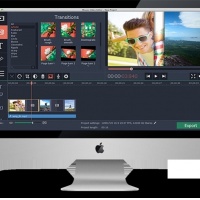3-D printing is taking off like never before. It’s easy to do an internet search and find all kinds of photos of cool things people have created with a 3-D printer. A lot of these fun projects, though, seem little more than a trivial and entertaining use of technology that might “some day” be of. In reality, though, 3-D printing is already being put to use in lucrative and powerful ways. But it might get a little confusing, though. Where are people getting access to 3-D printers? And what do 3-D printers do that is useful or makes any money?
There are plenty of workplaces in America and around the world that have 3-D printers in use. So what sort of workplaces are these? Well, there are a lot of different industries that use 3-D printing, actually, but we can see why 3-D printing is useful by taking a closer look at just one: manufacturing.
How 3-D printers work
But first, let’s refresh our memories on how 3-D printers work and what they actually do. The idea behind a 3-D printer is to build up a three-dimensional object using layers. Think about how an inkjet printer works: the ink is put on the paper, meaning it very slightly rises off the paper. What if you used something other than ink--something that could stick to itself? And what if you kept printing layer after layer, so it rose further and further off the page, creating a 3-D object? And what if you skipped the paper altogether, and just used the layers of “ink” alone? Congratulations--you’ve just explained exactly how 3-D printers work.
Manufacturing with 3-D printing
So what is this good for in manufacturing? There’s the obvious, of course: you can manufacture things with 3-D printers, provided that you want to make them out of the materials 3-D printers can use. But the manufacturing industry already has some very cost-effective ways to make things, so do they need 3-D printers?
They do--for prototyping. When you set out to make 10,000 of something, you’re going to want to be super-sure that that thing is being made to the exact specifications that it should be. So you’ll want to create some prototypes to examine and test. Does the prototype fit where it needs to go? Does it look how it needs to look? Will it work in every way it’s supposed to? If not, it’s back to the drawing board to create a new design and, later, another prototype.
And creating prototypes is a whole lot faster and easier with the aid of a 3-D printer! Designers can just send their computer designs to a 3-D printing service (or to their in-house 3-D printer, if the company has one), and they’ll quickly have a tangible prototype of that exact design.
Now that we understand this use of 3-D printing, it’s easy to see that other industries would find the technology similarly useful. The automotive industry needs to prototype cars and parts before it’s ready to manufacture anything; the same goes for the aerospace industry and many others. And, in all of these industries, 3-D printing has become very, very important.




